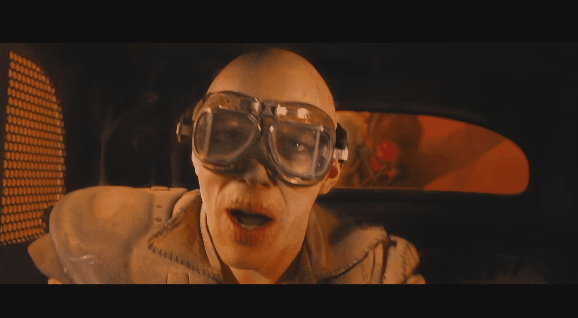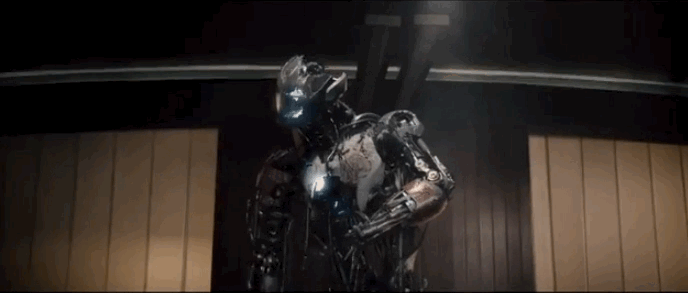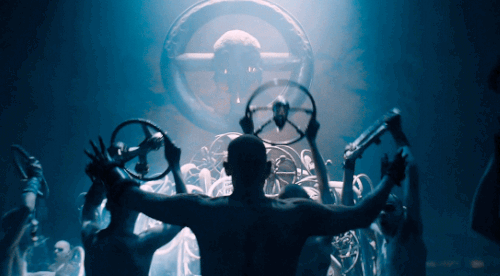MAD MAX and the Chokehold of Franchising
In a blockbuster industry dominated by Marvel, it is not only refreshing to see a film that dares to be bold in its visual execution, but important as well. To many viewers this summer, MAD MAX: FURY ROAD was the physical manifestation of ecstasy, a visual treat and a masterpiece in aesthetic world building. Without uttering so much as a single word, viewers were sucked into a vivid, breathing universe that managed to establish the beliefs of an entire population. Audiences were told the desires and power structures of this desert wasteland entirely through visual storytelling, culminating in a narrative that deliberately bypassed the pitfalls of the common 21st century blockbuster.
To most critics, MAD MAX: FURY ROAD was celebrated as an ode to the seamless integration of practical effects with subtle digital touch ups, and it’s indisputable that this is what will catch anyone’s attention upon a first viewing. But, as the dust settles since the film’s May 15th release, it’s becoming ever more apparent that the film’s most distinctive quality lies in its freedom from the chokehold of franchising. This is not to say that MAD MAX: FURY ROAD won’t have any sequels. In fact, its likely to considering just what a box office success it was, but it treats world building with a sense of respect that Marvel has thrown out the window ages ago.
Daft Punk Live On the Lexus
A distinct proof of MAD MAX: FURY ROAD’s strong execution is its 120-minute runtime. Although this sounds like the length of any traditional film, one must consider what George Miller’s 2015 vehicle represents for the franchise; it’s a first in what could easily become a lengthy canon, exists as a viciously ambitious project, and consisted of 480 hours of raw footage. And yet it came out to a solid two hours. How does this happen when every origin story these days hits the 140-minute mark, some epics manage to reach 180, and MAD MAX: FURY ROAD is supposed to function as a patchwork of both? The answer ultimately lies in how humbly self-contained it is.
What a thing to say, what a lovely thing to say!
Taking AVENGERS: AGE OF ULTRON as a case study for world building, one instantly notices a distinct and tangible difference in how the respective filmmakers treat the fictional universe in which they operate. Where Joss Whedon’s middling Marvel release fundamentally failed was in how little it trusted its world to explain itself to the viewer. This is not to say that Whedon is at fault for sloppy world building, because he’s long proven his ability to perform this duty well, but exemplifies itself as an intrinsic flaw in the Marvel system that films like MAD MAX: FURY ROAD do not suffer from. Consistently expanding its world, but never doing so to service the actual narrative at hand, AVENGERS: AGE OF ULTRON sends Thor to bathe inside a cave and introduces Andy Serkis as Ulysses Klaue, crafting detours that are as jarring as commercial breaks because they primarily exist for future THOR, BLACK PANTHER, and CAPTAIN AMERICA installments. This shallow attempt at depth plays out as such a narrative contrivance that it is quintessentially insulting to even claim that it contributes anything other than ad space, making for a film that is 141 minutes long, or 195 if one would dare to sit through Whedon’s assembly cut.
Oh, we’ve only just begun
Despite its jarring visual style, MAD MAX: FURY ROAD relays its information with a far more graceful sensibility, relying on the universal language of visual cues to understand how the inhabitants of this wasteland view everything from religion to properties of value (in this case cars, and to some, water), without ever planting any information that’s will only pay off in a future installment. In short, the film serves itself and only itself, and that’s its strongest quality. Consequently, Miller never tires his audience in spite of his vibrant excess, whereas Whedon’s release turned stale before the second set-piece because of how trivial everything felt. So although it can be argued that MAD MAX: FURY ROAD is an ode to practical effects, it’s just as much a tribute to the beauty of world building, boasting compositions that relay tactile iconography in order to establish motor vehicles as gifts from the gods, bordering on religious symbolism through careful word choice and precise lighting techniques.
Mass every Sunday
Much like its very first trailer suggested, MAD MAX: FURY ROAD revels in its operatic opulence. George Miller’s directing is a pitch perfect symphony of over-saturated destruction. Playing its cards just right, the film gives viewers enough narrative heft for audiences to read into a symbolic feminist agenda without detracting from the roller coaster ride that takes up the majority of the film’s runtime. And whilst the argument can surely be made that characters could have been more defined, and that Max’s inclusion in the narrative feels like a marketing ploy to bring in more viewers, this quickly ceases to matter when one digs into their popcorn and just enjoys the visual spectacle of a self-contained piece of blockbuster entertainment, devoid of the narrative filler that helps inaugurate the coming installments of a lengthy, tiresome franchise.







